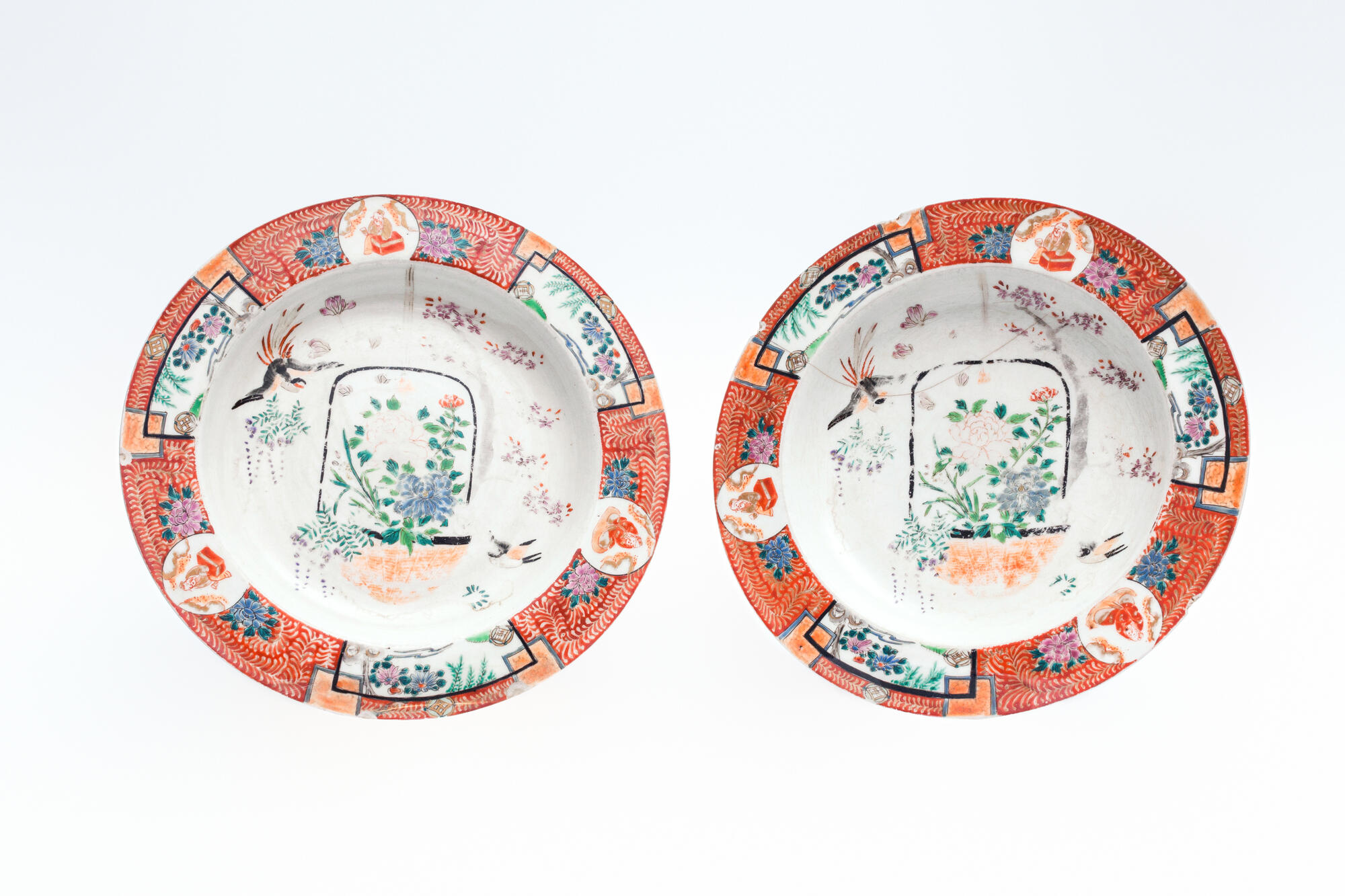The collection of items closely connected with the life and work of Ivan Goncharov includes two identical faience plates. The writer brought them from Japan, which he visited as a member of the Russian diplomatic mission. When he passed Irkutsk on his way home, he wrote,
Plates from Ivan Goncharov’s trip
Время создания
the mid-19th century
Место создания
Japan
Размер
diameter — 25 cm
Техника
faience
Коллекция
Выставка
#1
Plates from Ivan Goncharov’s trip
#4
#5
…If I ever get to Saint Petersburg with this chest, it will reveal about thirty bobbleheads and vases on which I may have spent a thousand rubles <…> and pictures, and various prayer beads of bamboo and nut, which I have all bought myself…
#2
For many years, Goncharov kept the painted plates as a remembrance of his trip. After his death, they were inherited by his housekeeper Alexandra Treygut. Eventually, the plates were donated to the museum by Nina Rezvetsova, who was married to the son of Alexandra’s daughter.
The plates were made in the mid-19th century. The Japanese characters inscribed on the base indicate the place of production — Kyushu Island, Hizen Province (present-day Saga and Nagasaki Prefectures). Since olden times, this province has been famous for its ceramic production, especially Arita ware.
The brick-red rim is flat and ornamented with a floral pattern. The three roundels against the white background depict people dressed in traditional Japanese clothes. Each roundel is decorated on both sides with peonies — the Japanese believe that this flower symbolizes luck, prosperity, beauty, and love. At first, peonies were brought to Japan from China. However, the Japanese people soon created their own breeds, which were not very lush and had only 10-14 petals. Despite that, they perfectly matched the main Japanese beauty concepts of modesty and subtle elegance. Peonies were often depicted on both men’s and women’s kimonos, dishware, folding screens, and hanging scrolls that were used instead of paintings to decorate walls.
In the center, the plates feature floral baskets that have the same peonies as the rim. The baskets are circled with floral and leaf motifs and images of flying birds. One of the plates has flawlessly survived to this day, while the other one has a crack and a few chips on its border.
#3
Ministry of Culture of the Russian Federation
читать дальшескрыть
00:00
00:00
1x
Plates from Ivan Goncharov’s trip
Время создания
the mid-19th century
Место создания
Japan
Размер
diameter — 25 cm
Техника
faience
Коллекция
Выставка
Открыть в приложении
Поделиться



